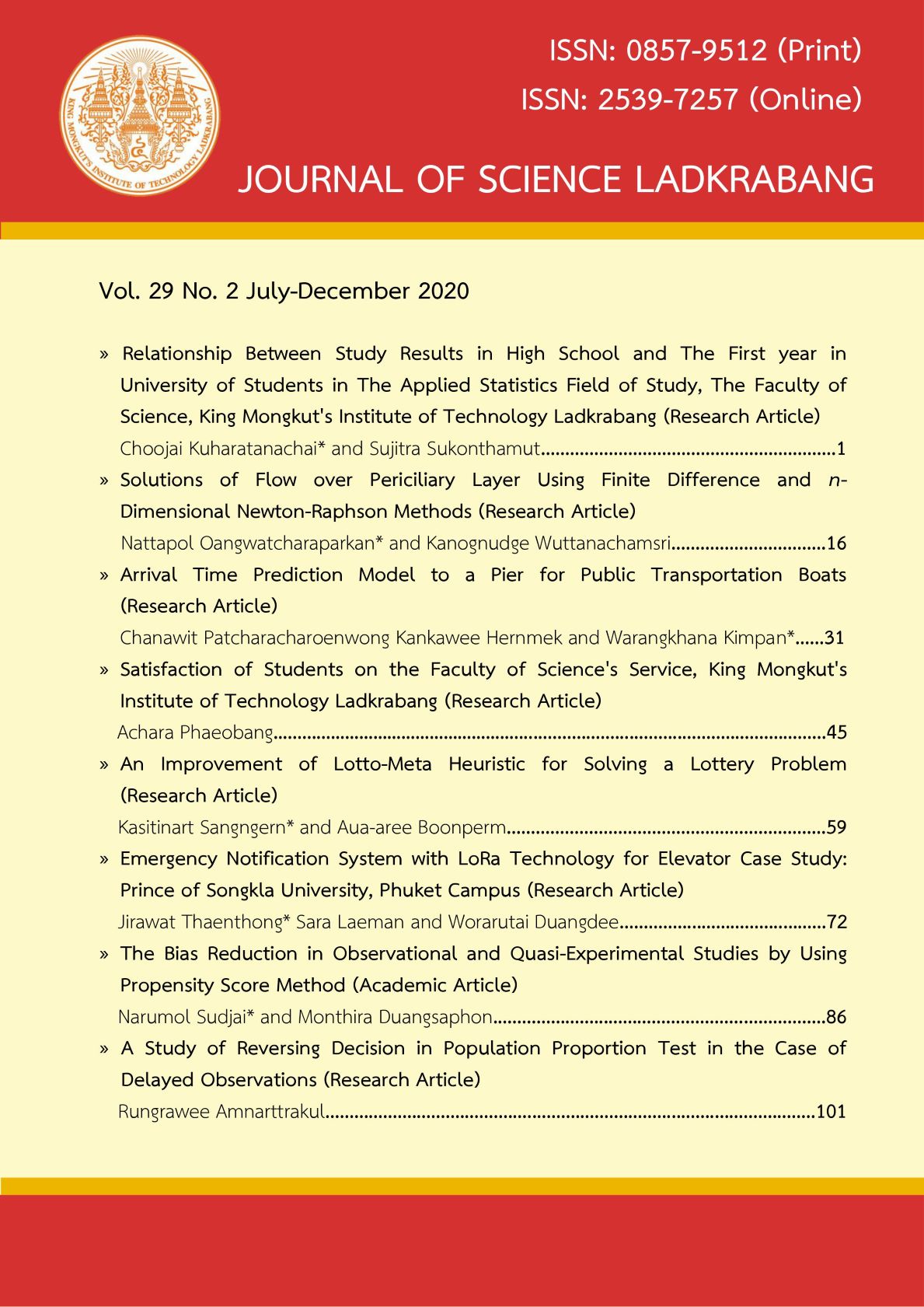Solutions of Flow over Periciliary Layer Using Finite Difference and n-Dimensional Newton-Raphson Methods
Main Article Content
Abstract
Nowadays, air is contaminated with pollution. When we take this polluted air into the lungs, organs involved in breathing system produce mucus to catch the particles and remove them from the human body by the movement of tiny hair lining on the epithelium cell in the respiratory system. The layer containing the tiny hair called is cilia. The cilia are arranged on the epithelium called the Periciliary Layer (PCL). The fluid around that layer or PCL fluid will affect the movement of cilia and the mucus from the body. In this research, we find the velocity of the fluid in the PCL by using the nonlinear Brinkman equation, where the fluid flows by the movement of cilia, not just the pressure gradient. The second-order finite difference method and the Newton-Raphson approach are employed to calculate the numerical solutions. The results are compared with the exact solution for the linear terms of the equation without nonlinear term, with a good agreement. We present the solutions of the nonlinear Brinkman equation when the cilia make angles 70∘, 80∘ and 90∘ with the horizontal plane. Applications are fluid flow through rice field and other similarly porous media.
Article Details
References
Chamsri, K. 2012. Modeling the Flow of PCL Fluid due to the Movement of Lung Cilia. Ph.D. thesis, University of Colorado Denver.
Bennethum, L.S. and Cushman, J.H. 1996. Multiphase, Hybrid Mixture Theory for Swelling Systems-I: Balance Laws. International Journal of Engineering Science, 34(2), 125-145.
Chamsri, K. 2014. N-Dimensional Stokes-Brinkman Equations using a Mixed Finite Element Method. Australian Journal of Basic and Applied Sciences, 8(11), 30-36.
Chamsri, K. 2015. Formulation of a Well-Posed Stokes-Brinkman Problem with a Permeability Tensor. Journal of Mathematics, 1, 1-7.
Wuttanachamsri, K. and Schreyer, L. 2020. Effect of Cilia Movement on Fluid Velocity: II Numerical Solutions over a Fixed Domain. Transport in Porous Media, Accepted.
Gatica, G.N., Gatica, L.F. and Sequeira, F.A. 2015. Analysis of an Augmented Pseudostress- Based Mixed Formulation for a Nonlinear Brinkman Model of Porous Media Flow. Computer Methods in Applied Mechanics and Engineering, 289, 104-130.
Jha, B.K. and Kaurangini, M.L. 2011. Approximate Analytical Solutions for the Nonlinear Brinkman-Forchheimer-Extended Darcy Flow Model. Applied Mathematics, 2(12), 1432-1436.
Kasamwan, T. and Wuttanachamsri, K. 2020. Unsteady One-Dimension Flow in PCL with Stokes- Brinkman Equation. Proceeding The 9th Phayao Research Conference, Phayao, 353.
Abbasbandy, S. and Asady, B. 2004. Newton’s method for solving fuzzy nonlinear equations. Applied Mathematics and Computation, 159(2), 349-356.
Abbasbandy, S. and Ezzati, R. 2006. Newton’s method for solving a system of fuzzy nonlinear equations. Applied Mathematics and Computation, 175(2), 1189-1199.
Chun, C. 2005. Iterative methods improving newton’s method by the decomposition method. Computers & Mathematics with Applications, 50(10-12), 1559-1568.
Weinstein, T.F. and Bennethum, L.S. 2006. On the Derivation of the Transport Equa- tion for Swelling Porous Materials with Finite Deformation. International Journal of Engineering Science, 44(18-19), 1408–1422.
Sears, P.R., Thompon, K., Knowles, M.R. and Davis, C.W. 2013. Human Ariway Ciliary Dynamics. Jounal of Physiology-Lung Cellular and Molecular Physiology, 304(3), 170–183.
Koplik, J., Levine, H. and Zee, A. 1983. Viscosity Renormalization in the Brinkman Equation. The Physics of fluids, 26(10), 2864–2870.
Chamsri, K. and Bennethum, L.S. 2015. Permeability of Fluid Flow Through a Periodic Array of Cylinders. Applied Mathematical Modelling, 39(1), 244–254.

